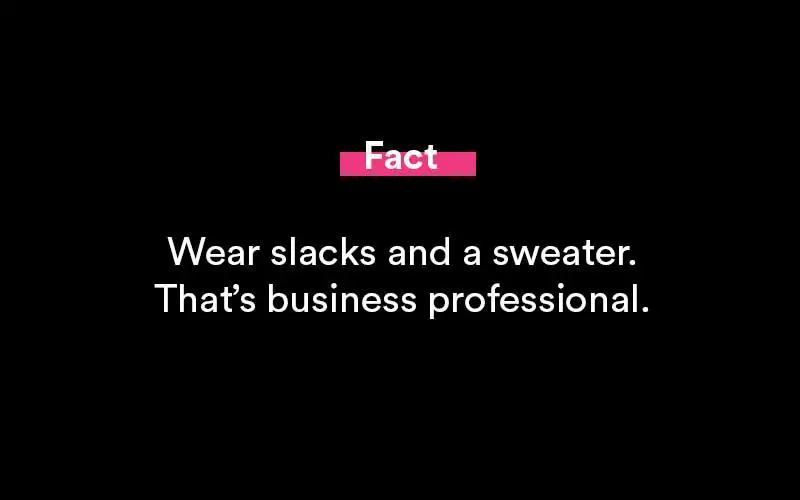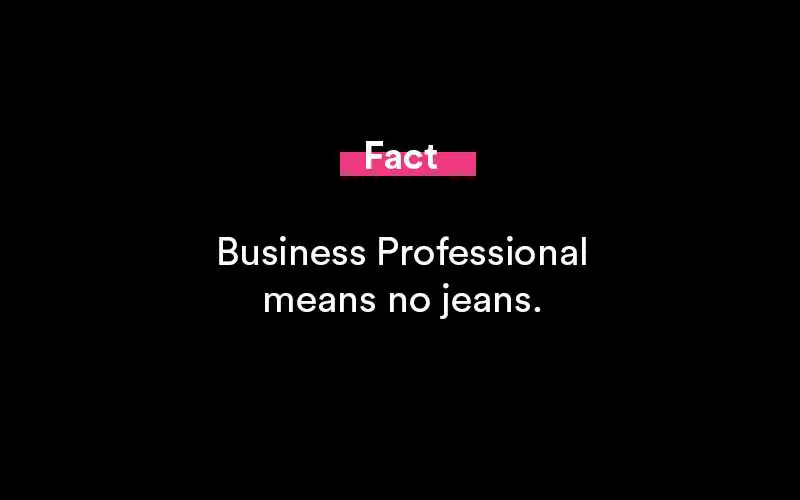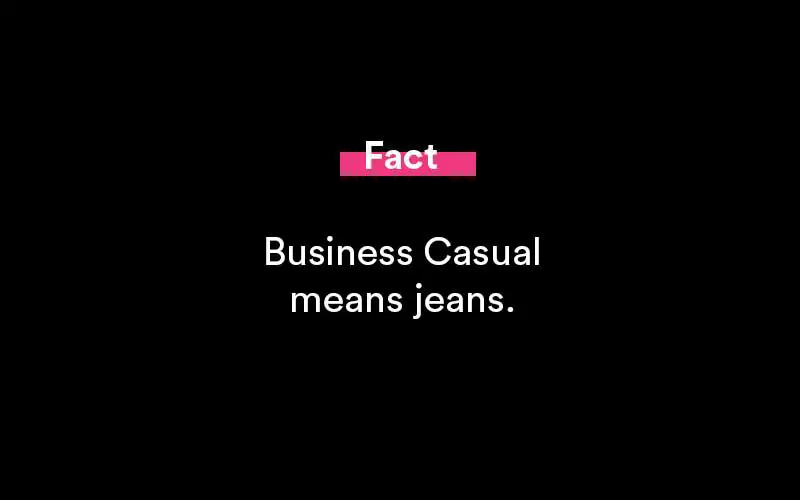Business Casual vs Business Professional (Everything to Know)
What's the difference between business casual and business professional attire? Understanding your company's dress code will assist you in selecting appropriate attire for work and company activities. While business professional attire was formerly ubiquitous across nearly all industries, business casual has grown in popularity in today's offices. We discuss the difference between business casual and business professional attire in this post to assist you in deciding what to wear to work.

Dress codes for business casual vs. business professional
The dress code for an office may establish the tone, ranging from a more formal professional look to a more relaxed business casual look. While some employers believe that a professional appearance is required for client-facing positions, others believe that business casual attire is more relaxed and comfortable, which results in increased productivity.
Management takes choosing between these two dress codes very seriously, therefore it's critical to understand the distinctions between them.
Suggestions for dressing professionally
The following recommendations will assist you in selecting proper apparel, regardless of whether your dress code is informal or professional.
- Maintain a minimal accessory collection and avoid anything that will attract too much attention or create too much noise, such as dangling bracelets.
- Maintain clean fingernails.
- Always keep your clothes clean, ironed, and free of rips and tears.
- Makeup colors that are natural are preferable.
- Avoid wearing perfumes or colognes that are overbearing.
- Skirts should not be worn too short.
- Inquire before wearing anything sleeveless.
- Dress in well-fitting or tailored garments.
- Choose clothing that is both comfortable and confident.

What is the definition of a business casual dress code?
The purpose of business casual attire is to feel comfortable in the professional environment without appearing unkempt or disheveled. For adherents of the style, it embodies the ideal marriage of labor and personality.
Women's business casual attire
Business casual attire allows for a bit more inventiveness on the part of ladies. While you might choose brighter colors and smaller designs, you should always strive for a clean and finished appearance. The following items are appropriate for a business casual dress code:
- Pants with a shift dress
- Skirt that is knee-length
- Shirt with button-down collar
- Shirt polo
- Cardigans
- Sweaters
- Blazers
- Simple footwear, whether flats or heels.
- Accessories might be more substantial and distinctive.
Men's business casual attire
For males, business casual clothes retains a professional appearance but eliminates the need for formal accoutrements such as ties. The following attire is appropriate for a business casual dress code:
- Pants
- Polo shirt Button-down shirt Knit shirt with collar
- Sweater\sBlazer
- Excellent belts
- Shoes for formal occasions or loafers
What is a professional business dress code?
Not every workplace has adopted a business casual dress code. Certain offices desire to keep a business professional appearance. For both men and women, business professional wear is frequently more conservative in color than business casual clothes. Bright colors and bold patterns are frequently avoided in favor of black, gray, natural hues, navy, or dark blues. While some offices permit the use of color on shirts worn beneath a jacket, these hues are typically limited to muted or pastel tones.
The following clothing items are considered appropriate for a professional business dress code.
Women's business professional attire
For ladies, a business professional clothing dress code allows for clean and polished silhouettes. The following attire is acceptable:
- Suit in pants or skirt
- Dress Shirt with a button-down collar
- Blouse
- Sweater
- Dress shoes, whether with heels or flats
Men's business professional attire
Suits are frequently required for men in this dress code. The objective is to present a polished and professional appearance. The following items are deemed appropriate for a professional business dress code:
- Suits
- Button-down shirts
- Sweaters
- Ties
- Fashionable belts
- Cufflinks
- Dress shoes
How to choose what to wear to work
You can use the following procedures to determine what to wear to work:
Conduct a review of the employee handbook
Consult your employee handbook's dress code provision, if one exists. Alternatively, adhere to any guidelines established by Human Resources.
Take note of how coworkers dress
Create a wardrobe based on what others in your department wear, most notably what your boss or others at their level wear. When in doubt, consult the business manual until more clarification is obtained.
Improve your interviewing skills
If you're interviewing with a company, expect to dress at least one level more formally than their required office attire. Suits are typically the most appropriate attire for interviews. While you're at a company for an interview or training, observe how staff dress to get a sense of their dress code.
Adhere to the fundamentals
When building your professional wardrobe, it's ideal, to begin with the basics, such as classic pants, jackets, shirts, or skirts, as specified in the business dress code, and gradually add more articles of clothing and accessories as your understanding of what to wear improves.
What to avoid wearing to work
While each organization will have its own set of rules, certain kinds of apparel should not be worn to work. Regardless of the dress code, it is preferable to avoid the following:
- Converse flip-flops
- Sneakers
- Jeans that have been ripped
- Shorts
- T-shirts
- Exercise attire
- Any garment that contains rips, tears, or frayed hems
- Any garment that contains stains
- Any wrinkled garment Any apparel that makes you feel uneasy
What is business professional casual?
It's important to dress appropriately for every occasion at work. Whether a job interview or following the office dress code. Business casual is typically no jeans, no shorts, short skirts, or short dresses for women. Optional ties for men. And button-down shirts or blouses. It usually includes dress pants and business attire.
What makes an outfit business professional?
Professional business attire should be well-fitted and tailored to fit you. It usually means fitted skirts, slacks, and tops. Usually button-down shirts with a blazer.
Are jeans business professional?
No. Jeans are not business professionals. Avoid wearing jeans or athletic apparel. Especially if the office dress code is considered a formal dress code. Never wear open-toed shoes or a knee-length skirt for women.

Popular Resources

Featured
35+ Phone Interview Questions & Best Sample Answers
Phone interviews have become a core part of the process when attempting to find a secured placement for an open position. Companies receive massive responses from potential candidates for any..

Featured
12+ Best Questions To Ask A Recruiter
Concerning a job search, you might receive numerous offers from your recruiters. Before you choose one, you need to assess all the conditions, for which it is vital that you know everything associated with the offered position..

Featured
Answering "What Makes You Unique" In A Job Interview
Answering this question during a job interview requires more than knowing why you are unique as an individual. Yes, the true scientific answer is made up of two main components: your..

Featured
250+ Ice Breaker Questions for Life
An ice breaker question is a question that’s asked from one person to another person in order to act as a conversation starter. It brings a connection...

Featured
10 Best Answers to "What Motivates You?"
Open-ended questions like “What motivates you?” can elicit a deer-in-the-headlights reaction from job candidates if they are unprepared. It’s a broad question and can leave the interviewer..

Featured
Answering "How Did You Hear About This Position" In An Interview
A lot of interviewers ask this question - how did you hear about this position? This way they can judge you if you are a passive or an active job seeker..

Featured
8 Best Thank You Emails After an Interview (Samples, Free Templates)
Writing a thank you note after an interview says a lot about you as a potential employee. Most notably, it says that you care about the opportunities presented..

Featured
Writing a Resignation Letter (How To Write It, Samples)
Writing the perfect letter of resignation is more of an art than it is a science. And we’re going to cover how to master that art form in this full guide..

Featured
How to End a Letter (Example Salutations, Sign Off's)
Knowing how to end a business note or email is an important skill to develop. It helps portray a sense of confidence, respect and tone to your message..
